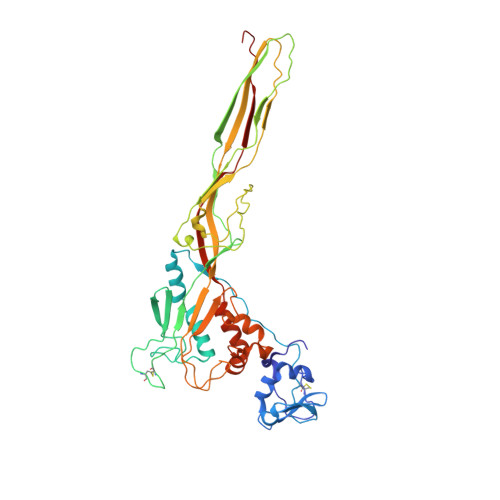Cryo-EM structure of aerolysin variants reveals a novel protein fold and the pore-formation process.
Iacovache, I., De Carlo, S., Cirauqui, N., Dal Peraro, M., van der Goot, F.G., Zuber, B.(2016) Nat Commun 7: 12062-12062
- PubMed: 27405240
- DOI: https://doi.org/10.1038/ncomms12062
- Primary Citation of Related Structures:
5JZH, 5JZT, 5JZW - PubMed Abstract:
Owing to their pathogenical role and unique ability to exist both as soluble proteins and transmembrane complexes, pore-forming toxins (PFTs) have been a focus of microbiologists and structural biologists for decades. PFTs are generally secreted as water-soluble monomers and subsequently bind the membrane of target cells. Then, they assemble into circular oligomers, which undergo conformational changes that allow membrane insertion leading to pore formation and potentially cell death. Aerolysin, produced by the human pathogen Aeromonas hydrophila, is the founding member of a major PFT family found throughout all kingdoms of life. We report cryo-electron microscopy structures of three conformational intermediates and of the final aerolysin pore, jointly providing insight into the conformational changes that allow pore formation. Moreover, the structures reveal a protein fold consisting of two concentric β-barrels, tightly kept together by hydrophobic interactions. This fold suggests a basis for the prion-like ultrastability of aerolysin pore and its stoichiometry.
Organizational Affiliation:
Laboratory of Experimental Morphology, Institute of Anatomy, University of Bern, Baltzerstrasse 2, 3000 Bern 9, Switzerland.














